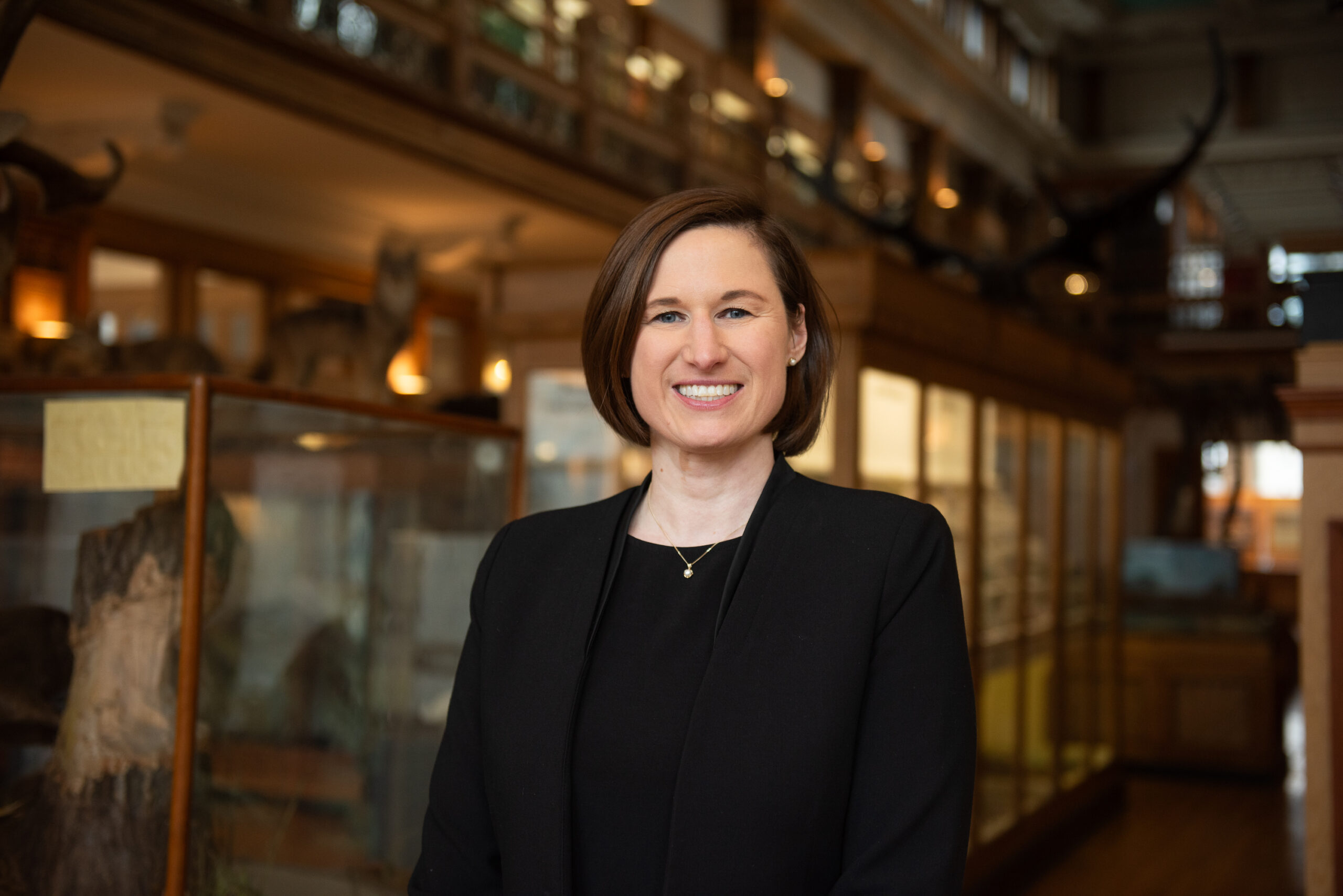
This past fall, Catherine Turgeon joined the Redpath Museum as its new Director. Nestled in the heart of McGill’s downtown campus, the Redpath houses collections in the fields of paleontology, zoology, mineralogy, and ethnology.
Turgeon spoke to the Reporter about her background in art history, her journey to working in museums, what she loves about the Redpath, and the ever-evolving societal role of the museum.
Can you tell us about your professional background?
I’ve worked in museums for over 15 years. I have always been attracted to collection management and exhibitions, and it’s in this area that I completed my master’s internship at the Whyte Museum of the Canadian Rockies and the Buffalo Nations Luxton Museum.
Between 2008 and 2010, I carried out several contracts in art galleries and at the Montreal Museum of Fine Arts.
In 2013, I joined the Raimondi Museum, a museum of the history of natural sciences of Peru. Along with the Director, I developed and implemented a travelling exhibition and educational program adapted to each region where the exhibitions were presented. Known as Treasures of Peru, Antonio Raimondi’s Legacy, this cultural and educational project received two national excellency awards in 2015.
Back in Montreal in 2018, I held the position of collection manager at the Lachine Museum.
What drew you to work in museums?
In 2005, after completing my bachelor’s degree in art history, I travelled to Europe to experience direct contact with art and to discover the masterpieces of Western art history.
During this trip I also discovered the magic of aquariums, which are really museums with living collections. While visiting the Antwerp Aquarium and experiencing a direct encounter with the living underwater sceneries, I had a breakthrough moment: how can the traditional museum experience integrate magic of the kind experienced in aquariums?
With my personal conviction that authenticity and the encounter with the real object are an unconditional aspect of what makes museums, museums, I decided to register for the museum studies master’s program at the Université de Montréal.
When it came time to determine a research topic, I combined my passion for Portuguese cultural heritage with my strong conviction that authentic experience with history is an immaterial component specific to museums. I travelled to Portugal to study the murals in the Ducal Palace of Vila Viçosa and a few historical buildings transformed into hotels. This investigation brought me to question the definition of what a museum is and what are the criteria that define a museum.
In my opinion, it was obvious that the concept of the direct sensitive experience described by the museologist François Mairesse was an essential criterion that had to integrate the new museum’s definition. Through this research, I was awarded the Roland Arpin Prize (2009) from the Musée de la Civilisation.
What excites you most about working at the Redpath?
As is it known in the community: the Redpath is the mother of all museums! It is the oldest building in Canada built to house a museum. The architectural features of the building, the rich history of the institution, and the collections make it a unique example in the history of museums in Canada.
Within the next few years, the Redpath will experience many changes. I see this an opportunity to transform the Redpath to reach its full potential in education, collections-based research, public programming, exhibitions, presentation, and conservation.
What are some of your favorite items in the Redpath collection?
The Redpath’s natural science and ethnology collections are exceptional. The Redpath is the only museum in Montreal where this encounter takes place!
One of the collections that I appreciate is the minerals collection, which is certainly one of the major attractions within the museum, specifically with young visitors. From the research point of view, this collection contains thousands of samples that help students and researchers in their work to better understand the ground we live on.
The onset of the COVID-19 pandemic challenged the traditional operations of museums. What opportunities do you see for museums to continue engaging visitors outside of the physical museum space?
The pandemic has taught us to review our ways and to adapt to a constantly changing environment. Museums are essential for societies: They anchor us in present reality and allow us to understand our past, while contributing to the development of our future.
Off-site mediation, or web-based activities, will continue to contribute to museums’ primary actions. These actions must be seen as complementary activities, supporting museums in their search to diversify and reach new audiences.
To engage new visitors, tomorrow’s museums must assume their role as leaders and contribute to the implementation of sustainable practices.
As established temples of knowledge in their societies, museums can undertake a unique role and voice to contribute to sustainable development.
